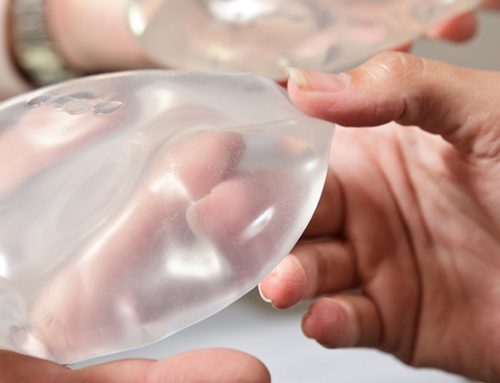Update: The American Society of Plastic Surgeons provided an update on BIA-ALCL in January of 2018. Please follow this link to read more.
If you haven’t already heard, you should know that there is a rare cancer associated with breast implants (both saline and silicone gel). It’s called breast implant-associated anaplastic large cell lymphoma (BIA-ALCL). It occurs mostly with implants that have a textured surface, though there have been cases with smooth-surfaced implants. As of March 21, 2017 there have been 126 confirmed cases of BIA-ALCL reported in the United States.
A possible association between this cancer and breast implants was identified by the U.S. Food and Drug Administration (FDA) in 2011, but there wasn’t enough solid evidence to confirm a connection or make any recommendations at that time. The following year, the Plastic Surgery Foundation collaborated with the FDA to create a patient registry called PROFILE (Patient Registry and Outcomes for Breast Implants and Anaplastic Large Cell Lymphoma, Etiology and Epidemiology).
PROFILE was created to better understand the relationship between breast implants and ALCL, to find risk factors, “diagnostic predictors, and the best ways to manage this disease.” During that time, researchers also began to double down on their efforts to understand this disease and any association with breast implants.
In 2016 the World Health Organization officially recognized a link between breast implants and ALCL, and the FDA agreed:
“All of the information to date suggests that women with breast implants have a very low but increased risk of developing ALCL compared to women who do not have breast implants.”
By this time, the research had also revealed that the cancer was most often associated with implants that had a textured surface. ALCL is not a cancer of the breast tissue itself, but occurs in the capsule that forms around the implant. It usually develops between two and 28 years after a patient gets implants and occurs with the onset of symptoms like swelling of the breast or lumps in the breast or armpit.
Fortunately, BIA-ALCL is not only rare but also has a very good prognosis. The National Comprehensive Cancer Network says the best treatment is to completely remove both implants and the capsules that have formed around them. Ninety-three percent of patients who undergo treatment are disease free within three years.
In March, 2017, the FDA updated their website to include more information on BIA-ALCL, including their current recommendations and a number of patient and physician resources. Here are their most current recommendations:
Before you have surgery: Educate yourself about BIA-ALCL before having surgery, and talk to your surgeon about the risks and benefits of textured versus smooth-surfaced implants.
If you already have breast implants: If you don’t have symptoms, there is no need to change your routine medical care and follow-up. However you do need to be sure to follow the standard recommendations given by your surgeon for routine care.
If you have breast implants, it is important that you follow all of your surgeon’s instructions in the early days and months after surgery but also in the years thereafter. Your surgeon will likely want to follow up with you each year to examine and discuss your implants. It is also important that you continue with routine cancer screenings including self exams, physician exams, and mammograms as recommended by your doctor.
If you have had breast implants, keep an eye out for any changes in your breast size or symmetry, rippling or hardness around your implant, or lumps in your breast or armpit. If any of these occur or you are simply concerned about your breasts for any reason, don’t hesitate to make a follow-up appointment with your plastic surgeon.
If you want to know more about BIA-ALCL, the risks and benefits of textured versus smooth implants, or whether breast implants could be right for you, contact our office in Collin County, Texas for your consultation.




